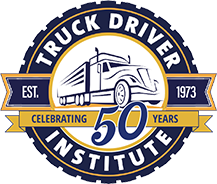What Are Team Truck Driving Rules?
Driving solo can be lonely, it doesn’t have to be with a partner and team truck driving rules in place. As a part of a two-person team, you can rest, sleep, or eat on your off-duty shifts while your partner keeps the truck moving. Trucking companies are a big fan of team truck driving because of its reduced downtime and increased efficiency.
What Are FMCSA Regulations?
Team driving must balance the needs of two drivers, and FMCSA regulations ensure that their trips are safe and efficient.
The Federal Motor Carrier Safety Administration (FMCSA) is a part of the U.S. Department of Transportation (U.S. DOT). The U.S. DOT oversees all highway, railroad, pipeline, maritime, and air transportation. By creating regulations, U.S. DOT increases mobility and keeps traveling public safe. The department employs modal administrators to ensure compliance and enforcement with FMSCA regulations.
FMSCA’s goal is to enforce safety regulations that reduce crashes, fatalities, and injuries involving large trucks and buses. In partnership with Federal, State, local and industry organizations, FMSCA implements safety programs to ensure that its goal is being continuously met. These programs keep our Nation’s roadways safe by way of education, enforcement, research, and technology.
These regulations will vary depending on the type of vehicle you operate, and whether you transport passengers or hazardous materials. States can differ in intrastate carrier regulations and registration fees, so it’s important to make sure motor carriers comply with both Federal and State regulations. Failing to comply with these regulations is not only a risk to your safety, but it also risks affecting your carrier’s safety record.
FMSCA focus areas include commercial driver’s licenses, data and analysis, regulatory compliance and enforcement, research and technology, and safety assistance. Read more about FMSCA focus areas, programs, and tools here.
What Are Hours of Service (HOS) Regulations?
FMCSA implements “hours of service” (HOS) regulations for the maximum amount of time drivers are permitted to be on duty. To help drivers stay awake, HOS specifies the number and length of rest periods. These hours are different for property-carrying drivers and passenger-carrying drivers.
Effective in September 2020, the final rule revises FMCSA HOS regulations to provide greater flexibility for drivers without adversely affecting their safety. This flexibility allows drivers to adjust their driving schedules in cases of unanticipated weather, fatigue, and traffic congestion.
There are 4 areas of revision: short-haul exception, adverse driving conditions exception, 30-minute break requirement, and sleep berth provision.
-
Short-Haul Exception
Short-haul drivers are required to operate within a 150-air-mile radius, starting and ending their duty period at the same location. The maximum duty period is 14 hours. Between shifts, drivers must take 8 hours off (if carrying passengers) or 10 hours off (if carrying property).
Additionally, both passenger and property carriers must use a time record. Your motor carrier has to record your time in and out and the total number of hours you drive in a day. Exceeding these hours or this mileage will require you to take a 30-minute break and to complete a regular log (a paper log with a graph grid) or an Electronic Logging Device (ELD).
-
Adverse Driving Conditions Exception
If adverse driving conditions are encountered, drivers can extend duty day and driving time by up to 2 hours. Adverse driving conditions include snow, sleet, ice, fog, and other adverse conditions. This exception does not apply to delays caused by accidents involving the driver, loading and unloading, and road construction or detours (except detours the driver couldn’t have known of).
-
30-minute Break Requirement
After 8 cumulative hours of driving, drivers must take at least a consecutive 30-minute break. This includes being off-duty and being on duty but not driving. Yard moves and roadside inspections count as “on-duty, not driving” time.
-
Sleeper Berth Provision
Finally, the sleeper berth provision allows drivers to split a 10-hour off-duty period as long as 3 conditions are met. 1) One off-duty period is at least two hours long, 2) the other involves at least 7 consecutive hours in the sleeper berth, and 3) these periods added together must total at least 10 hours.
Property-carrying v.s. Passenger-carrying HOS Regulations
Regulations for property-carrying and passenger-carrying drivers are very similar–they just differ in hour limits. To read these regulations with detailed descriptions, take a look at this table. Notice how prominent the final rule is in both of these lists.
HOS Regulations for Property-Carrying Drivers
- 11-hour driving limit
- 14-hour driving limit
- 30-minute driving break
- 60/70-hour limit
- Sleep berth provision
- Adverse Driving conditions
- Short-haul exception
HOS Regulations for Passenger-Carrying Drivers
- 10-hour driving limit
- 15-hour driving limit
- 60/70-hour limit
- Sleeper berth provision
- Adverse driving conditions
- Short-haul exception
Is Team Truck Driving For You?
Following these regulations is crucial for becoming the best team driver for you, your partner, and your carrier. Having a partner can make adhering to these rules easier—and make the job more enjoyable by reducing the loneliness of solo driving.
But is team driving the right fit for you?
To help determine if team driving suits your personality and preferences, consider these questions:
- Do you prefer having someone to talk to on long drives, or do you enjoy solitude?
- Can you sleep easily in a moving vehicle, or do you need total silence and stillness?
- How well do you handle being in close quarters with someone for extended periods?
If you answered “yes” to these questions, team driving may be a great fit for you. Having a partner can make the job more enjoyable and even more profitable.
Personal Tips for Successful Team Driving
Making team driving work requires open communication and good planning. Here are a few tips to ensure a smooth ride with your partner:
- Set expectations early: Before hitting the road, discuss sleep schedules, driving shifts, and communication habits to avoid conflicts.
- Agree on music: If you and your partner have different tastes in music, make a shared playlist or agree on a genre to prevent arguments.
- Track expenses: Use apps or simple logs to track shared expenses like fuel, food, and tolls. This ensures that everything stays fair.
Earning Potential: Team Driving vs. Solo Driving
One of the key benefits of team driving is the earning potential. While team drivers split their pay, they often cover more miles than solo drivers, resulting in higher overall earnings.
For example, a solo driver might cover 2,500 miles per week, while a team could cover up to 5,000 miles, potentially earning each driver more than they would make alone. Additionally, team drivers often get priority loads, which translates to more consistent work and income.
Health and Wellness Tips for Team Drivers
Long hours on the road can take a toll on your health, but following a few simple tips can help you stay fit and alert:
- Pack healthy snacks: Bring nuts, fruits, and protein bars to avoid unhealthy fast food options.
- Stretch during breaks: Use your breaks to move around, do some light stretching, or take a short walk to avoid stiffness.
- Manage sleep: Coordinate with your driving partner to ensure you both get adequate rest, especially on long hauls.
The Future of Team Driving
With the demand for freight transport continually rising, the future of team driving looks bright. As e-commerce continues to grow and companies look to optimize logistics, team drivers are expected to become increasingly valuable in helping meet delivery demands quickly and efficiently.
Prepare For Team Truck Driving With Truck Driver Institute
Having a partner who has your back on the road is a relief, but even better is having the skills to navigate challenging situations confidently. At TDI, we offer an affordable, immersive training program, led by experienced instructors, to take you from novice to road-ready in just three weeks.
With the demand for drivers on the rise, there’s never been a better time to start your truck driving career. TDI will help you finance your training and connect you with job placement opportunities. Contact us today at 800-848-7364 to start your training or fill out this form to learn more.
Get Started
Get your Class A CDL in our friendly, supportive CDL training program. TRAIN with experienced instructors – multiple good-paying, secure job choices with benefits available for eligible graduates. EARN $700 – $1000+ / week to start as a truck driver. Get started today by filling out the form below. We look forward to hearing from you!




